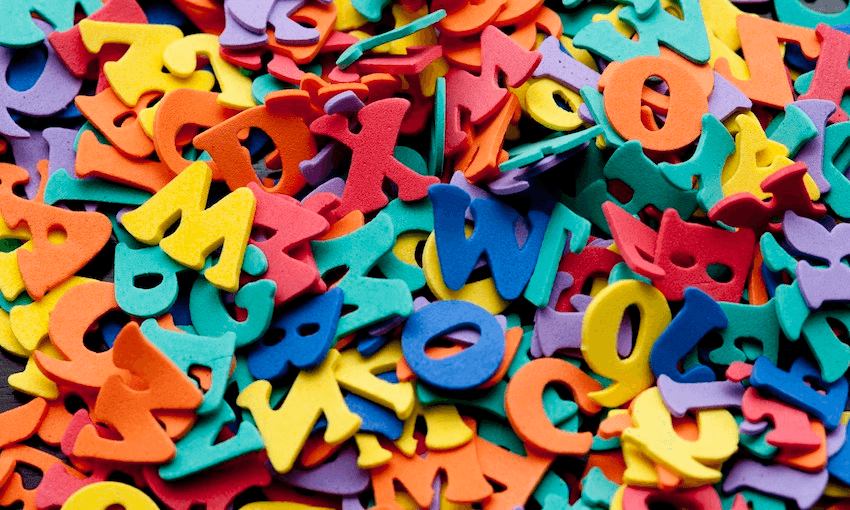The 2019 budget is coming out this Thursday, and with it a whole bunch of impenetrable jargon. We’ve picked out some of the key words to keep in mind as it is being read.
A
Ambitious
The last budget was typically described as ambitious. Now the word gets thrown around a lot to describe the policy plans Labour used to have, which haven’t survived direct contact with government intact.
B
Budget Responsibility Rules
The self-imposed spending controls, through which the government intends to pay down debt. They’ve just been loosened slightly, but that won’t take effect for a few more years.
C
Capital Gains Tax
That thing that we spent most of the last 12 months talking about, which now most certainly won’t be bolstering the government’s revenue.
D
Deficit and debt
These two concepts are different in a crucial way. A deficit is how much more money is going out across a particular budget year; the debt is the total cumulative amount owed.
E
Expenditure
Budget-speak for ‘spending.’
F
Fiscal headroom
How much money you have access to if you need to start borrowing. “Fiscal” is a catch-all term for government tax and spending; compare “monetary policy”.
G
GDP
Gross domestic product. In effect, the total economic output of the country.
H
Hack
Is this how details of the budget got out early? We’re still not quite sure, to be honest.
I
Interest payments
If government debt gets too high, then the interest payments can be financially damaging.
J
Joint bids
No, that’s not about asking your mate to hand over the illegal herbs. Ministers will now be making joint bids for priority areas of spending, so that if a wellbeing outcome is prioritised, multiple different government departments will end up pulling together to make it happen.
K
Keynesian economics
Named after John Milton Keynes, an economist who theorised that governments can and should spend to stimulate the economy, particularly in times of recession.
L
Living Standards Framework Dashboard (LSF)
How Treasury will actually go about doing the measuring and tracking of wellbeing outcomes – and then put it all together in a handy/often confusing graph for people to have a look at.
M
Mental health
Certain to be a strong area of focus for this budget – in fact it was among the first points about what was actually meant by ‘wellbeing’ that Grant Robertson confirmed, back at the end of last year.
N
‘Neffs’
Formerly known as ‘NEETs’ (people who are not in education, employment or training) they’re now largely being called ‘Neffs’ instead. It’s short for nephews, and plenty of spending announcements are aimed at “getting them off the couch” according to associate finance minister Shane Jones.
O
OBEGAL
Budget nerd heaven, this is operating balance, excluding gains and losses.
P
Pre-budget announcements
In the weeks leading up to Budget Day, governments these days always make various portfolio-specific announcements, which means greater attention for those decisions, and fewer surprises on the day itself. Sometimes, if you’re lucky, budget commitments get announced lots of times.
Q
Quantitative easing
A method by which (in simplified terms) the government increases the monetary supply in the economy through a central bank, often described as “printing money”. Widely used overseas, but tends not to be in New Zealand.
R
Robertson, Grant. The finance minister who last year impressed onlookers last year with a stonking and triumphalist speech about what the government was going to do. A lot less of it has actually come to fruition as he approaches his second budget.
S
Substance
What National’s finance spokesperson Amy Adams is warning the upcoming budget will lack.
T
Ties
No, really. The colour of a tie the finance minister wears while presenting a budget supposedly sends a signal about how they want it to be interpreted. A bright colour means it’s a bold, big spending budget, a muted colour means the budget will be austere and dignified. Last year Grant Robertson’s tie was as red as the rose in his lapel.
U
Under-delivering
Last year our U was underfunding – what Grant Robertson accused the previous National government of doing to public services. This year it’s under-delivering – what the current opposition are accusing the government of doing relative to their promises.
V
Visualisations
These are generally the key ways that budget spending is communicated on the day, given the complexity of the figures being thrown around.
W
Wellbeing
The one we’re all here to see this year. Basically a wellbeing budget will track how the country is performing socially, culturally and environmentally, rather than just economically.
X
Xat
We couldn’t think of a new one for this year, so once again, it’s tax, but backwards. Next!
Y
Yes
The word the finance minister never says straight away when another minister asks them for some more money in the budget
Z
Zero budget
A budget in which there is no increase in spending. Typically used when governments are desperate to pay down debt.
This post is an updated version of a story originally published in May 2018.
All of The Spinoff’s coverage of Budget 2019 is made possible thanks to the support of Grant Thornton. Learn more about our partnerships here.

